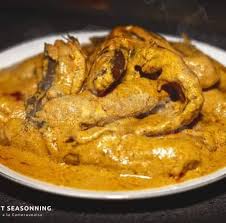A taste of nostalgia : How inflation is making humble meals elitist

By Synthia Lateu
At the Darkar market in Douala, the economic capital of Cameroon, stalls and heaps of diverse foodstuffs fill the market as many people come and go. The sounds of lively bargaining resonate, but a notable change is evident: the days of humble meals are fading. The nostalgia among housewives is real as they ponder what to feed their households. While food crops are readily available, the financial effort needed to acquire them has doubled.
Rose Nanga, a housewife, confides that each day she struggles to determine how to satisfy her family’s need. “With a thousand Francs, I used to cook Topsy bananas, but today, with the same 1000F, it’s only enough for an evening meal. To make lunch and dinner, you need at least 2000 Francs for bananas alone before you think about the other ingredients,” she says.
Banana vendor Mary, who has been in business for over 20 years, reveals that decades ago, food crops were the cheapest in the market, and they could sell at least 10 bananas for 25 FCFA. Today, however, just five bananas are sold for 200 FCFA.

For Ndongo Anastasie, another housewife, anyone able to afford meals in Cameroon today is considered wealthy. “In our day, with 500 Francs, you could prepare a good meal. You could buy plenty with 1000 Francs, and that would be sufficient. But today, that’s not the case. You need around 5000 Francs to prepare the same meal,” she states.
Once considered “humble” meals, like Topsy banana, garri, and jollof rice, have now become elitist.
According to these housewives, affording such foods now requires more than mere appetite.
Once considered “humble” meals, staples like Topsy banana, garri, and jollof rice have now become elitist. According to housewives, affording these foods requires more than just an appetite.
Clarisse, another housewife, highlights the grim reality: “Only the rich can afford bananas today. Everything is now expensive; rice costs 200 to 250 Francs per cup. How do we cope? With a budget of 2000 to 3000 Francs and six children at home, how do we manage?”
Vendors have also noticed changes over the years, with a significant increase in prices for ingredients needed for these meals. Across the market, housewives agree that navigating the economic landscape in Cameroon has become a marker of wealth.
The stories shared by these women are just a glimpse into the dire economic situation facing millions of Cameroonians. Last year, the World Bank projected that if current trends continue, the extreme poverty rate in Cameroon could reach 25.0% by 2026, affecting approximately 8 million people.
According to the National Institute of Statistics, nearly two out of five Cameroonians live below the national poverty line, set at CFA 813 per day per person. In 2022, ten million people were classified as living in poverty, out of an estimated total population of around 27 million. More than half of these impoverished individuals are in extreme poverty.
The World Bank’s CEMAC Economic Barometer, published on June 17, 2024, highlights that the population living in extreme poverty has already increased by more than 2 million since 2001, now exceeding 6 million, or 23% of the Cameroonian population.



